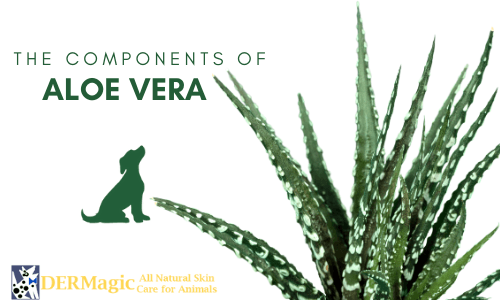

Long known as the "plant of immortality", aloe vera has played a role in our lives for centuries. It's valuable for a lot of reasons - primarily due to the rich tapestry of all-natural vitamins, minerals and enzymes that aloe naturally contains.
Aloe Vera can be divided into the following groups:
1. Vitamins
It is rich in all vitamins excluding Vitamin D, especially the antioxidant Vitamins A (beta-carotene), C and E and even contains a trace of vitamin B12, one of the very few plant sources of this vitamin. This is important for vegetarians and vegans.
2. Enzymes
Several different types of these biochemical catalysts when taken orally aid digestion by breaking down fat and sugars. One in particular, Bradykinase, helps to reduce excessive inflammation when applied to the skin topically and therefore reduces pain, whereas others help digest any dead tissues in wounds. Lipases and proteases, which break down foods and aid digestion, are present.
3. Minerals
Calcium, Sodium Potassium, Manganese, Magnesium, Copper, Zinc, Chromium and the anti-oxidant Selenium.
Although minerals and trace elements are only needed in very small quantities, they are essential for the proper functioning of various enzyme systems in different metabolic pathways.
4. Sugars
These are derived from the mucilage layer of the plant, which surrounds the inner gel, and are known as mucopolysaccharides, which enhance the immune system and help to detoxify.
Aloe Vera contains both mono- and polysaccharides, but the most important are the long chain sugars involving glucose and mannose or the glucomannans. These sugars are ingested whole from the gut, not broken down like other sugars, and appear in the bloodstream in exactly the same form.
This process is known as pinocytosis. Once in the bloodstream they are able to exert their immuno-regulating effect. Some of these polysaccharides are not absorbed but stick to certain cells lining the gut and form a barrier preventing absorption of unwanted material so helping to prevent a "leaking" gut syndrome. In topical preparations the sugars are also the main moisturizers.
5. Anthraquinones
Twelve of these Phenolic compounds are found exclusively in the plant sap. In small quantities, they aid absorption from the gastrointestinal tract and have anti-microbial and pain killing effects.
The important ones, Aloin and Emodin, act as painkillers. They also function as antibacterial and antiviral agents.
6. Lignin
This in itself is an inert substance but when included in topical preparations it endows Aloe Vera with a singular penetrative effect so the other ingredients are more easily absorbed into the skin.
7. Saponins
Saponins are a class of chemical compounds that help create foam (lather). These soapy substances form about 3% of the Aloe Vera gel and have antiseptic properties. These also act as powerful antimicrobials against bacteria, viruses, fungi and yeasts.
8. Fatty Acids
Cholesterol, Campesterol, b. Sitosterol and Lupeol.
These four plant steroids are important anti-inflammatory agents.
9. Salicylic acid
An aspirin-like compound possessing anti-inflammatory and antibacterial properties.
10. Amino Acids
The body needs 22 amino acids – aloe vera provides 20 of them! More importantly, aloe provides 7 out of the 8 essential amino acids that the body cannot synthesize from other sources, making it incredibly valuable.

